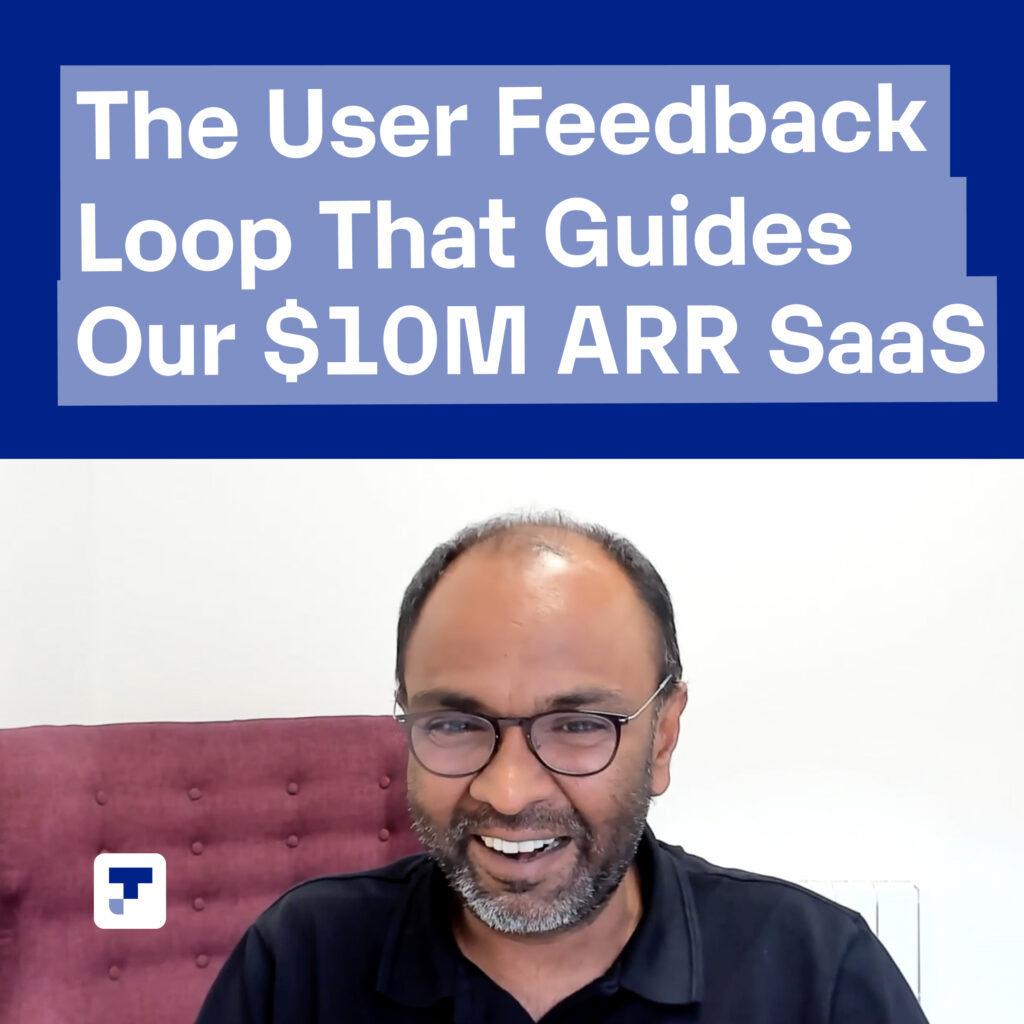Blog
The Feedback Loop and Productivity Metrics that Drive Our SaaS Growth

How does a bootstrapped $10 million ARR SaaS use customer feedback to guide product development?
How are the teams structured and more importantly how do they measure performance?
We sat down with Saravana Kumar the CEO and Founder of Kovai.co to talk all about his journey of bootstrapping Kovai from a single-person startup to a multi-product enterprise SaaS company with over 250 employees and an ARR exceeding $10 million.
This is part II of a multi-part series with Saravana if you’ve not checked out the first episode you can watch it here
In part two, we wanted to know how the product team at Kovai decides what to build next and why.
We all know the importance of customer feedback in guiding your product decisions but how does that change in a multi-product saas, especially as you continue to grow?
Customer Feedback: The Driving Force
“We are more like a feedback-driven company… the objective is, you know, how quickly we can get to a stage where we can have some early customers and that the feedback cycle starts to come.”
“When you first start, you are working with your own hunch and assumptions. At that stage, it’s all about, how quickly we can get to that stage where we’ve got some early customers and we can start getting that much-needed feedback.”
Transparency in Feedback Management
The team at Kovai takes an innovative approach to managing customer feedback:
“If you go to feedback.document360.com, you will see all the feedback that’s coming from our customers at the moment. There are some 1,800 items waiting.”
“And now you can we have a good problem to have because our roadmaps are driven by customer feedback rather than be thinking hard on, you know, what is the next big thing we wanted to crack and for the growth.”
“So if you look at that, it’s quite clear. This feature is requested by like 200 people and it’s very simple. Okay, let’s pick it up and answer it.”
“In fact, like the guidance I have given to our engineering team and the PM team is anything that got about 50 votes, just go and fix it, you know, don’t even think, you know, whether it’s a good feature or a bad feature.”
“Like if 50 people requested that particular thing, let’s just go and fix it depending on the complexity, if it’s something low hanging or, you know, something complex.”
Dogfooding: Being a Customer of Your Own Product
Saravana also talked about the importance of Microsoft’s famous Dogfooding practice of being an active user and customer of your own product.
“I also strongly believe you need to be a customer of your own product.”
“We have, you know, now we are talking about three products. We actually killed a few products as well, We shut down and sunset a lot of products as well. And the difference I see between the successful ones and the unsuccessful ones are the successful ones, we are customers of them, and use them.”
“But ones that are not successful are basically we think, hey, this looks like an interesting product and there is some fast-growing company and grow, they are growing very fast.”
Measuring Team Performance
On team structure and performance measurement, Saravana explains:
“It’s an outcome-based thing. You just need to measure, you know, like the output of the pod or the output of the individual. There’s no point bombarding with too many things.”
“So we have quarterly reviews as well like we look at, OK. Every quarter, there’s a rating system, 1 to 5, with 5 being the topmost and 1 being the lowest. If you put the mid-level three is basically somebody achieved what they should achieve.”
“For example, engineering resource, If you ask them, you know, they’re supposed to do or release like three features in the quarter, And if they just achieve that, you will get three.”
“But if they would, they would have gone above and beyond and then they’re just, you know, done so much beyond those three things that are assigned to them, they would go to five.”
I’m always investing my time mentoring them, guiding them, making it clear that this is what I want, so it starts with me setting the standard.”
“So it’s a continuous improvement, you know, like that is how we do it, you know, we set clear goals and then also mentor them and then help them to get to the goal as well.”
Read more

Case study:
CloseBot
How CloseBot was able to leverage seasoned tech advisory, to streamline their developm...

How to Develop a SaaS Application in Your Industry: A Step-by-Step Guide

What Makes Software Development Expensive & Unpredictable?

Collecting Customer Feedback for Enhanced Product Decisions

How Can Virtual Assistants Instantly Prototype a Marketplace or SAAS for You?
Create a free plan for growth
Speak to Victor and walk out with a free assessment of your current development setup, and a roadmap to build an efficient, scalable development team and product.
“Victor has been great. Very responsive and understanding and really knows his stuff. He can go the extra mile by tapping into his prior experiences to help your company out. Really enjoyed working with him.”
Founder of Agency360

Victor Purolnik
Trustshoring Founder
Author, speaker, and podcast host with 10 years of experience building and managing remote product teams. Graduated in computer science and engineering management. Has helped over 300 startups and scaleups launch, raise, scale, and exit.